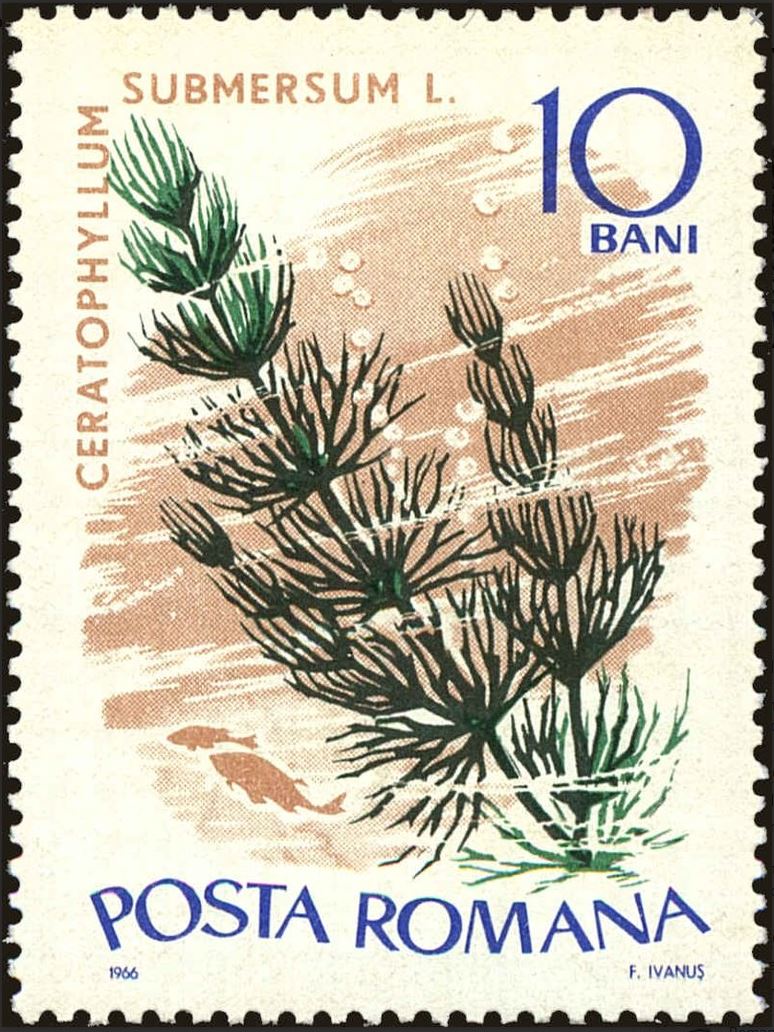Romania #1866 (1966) – Soft Hornwort (Ceratophyllum submersum)
$0.35
Romania #1866 (1966) – Soft Hornwort (Ceratophyllum submersum)
3 in stock
Description
Romania #1866 (1966) – Soft Hornwort (Ceratophyllum submersum)
Ceratophyllum submersum, commonly known as soft hornwort or coontail, is a submersed aquatic plant that belongs to the Ceratophyllaceae family. This plant is native to various regions, including Europe, Asia, and parts of Africa, and is found in a wide range of aquatic habitats, from ponds and lakes to slow-moving streams.
Here are some key characteristics and information about soft hornwort:
- Appearance: Soft hornwort is a submersed, rootless aquatic plant. It consists of slender, branching stems covered in feathery, finely divided, dark green leaves. The leaves are arranged in whorls along the stems, giving the plant a distinctive appearance.
- Habitat: This plant is well adapted to various aquatic environments. It can be found in both still and slow-moving waters, as well as in both acidic and alkaline conditions. It prefers clear, nutrient-rich waters.
- Growth: Soft hornwort can grow both submerged and floating, and it can be anchored to the substrate or left free-floating. In some cases, it may form dense mats of vegetation on the water’s surface. It typically grows rapidly and is often used to provide habitat and cover for aquatic creatures.
- Ecological Importance: Soft hornwort serves as a valuable part of aquatic ecosystems by offering habitat and shelter for a variety of aquatic organisms. It also helps improve water quality by absorbing nutrients and providing oxygen to the water.
- Cultivation: Soft hornwort is popular among aquarium enthusiasts and water gardeners because of its unique appearance and easy maintenance. In an aquarium setting, it can be anchored to the substrate or left floating, and it thrives in a wide range of water conditions. Soft hornwort can help control algae growth in the aquarium and provides a natural look to the underwater landscape.
- Invasive Potential: Soft hornwort has become invasive in some parts of the world where it has been introduced. Invasive populations can outcompete native aquatic plants and disrupt local ecosystems, so it’s important to be cautious when introducing this plant to new water bodies.
Soft hornwort is known for its attractive appearance, rapid growth, and its ability to serve as a beneficial addition to both natural aquatic ecosystems and artificial water features like aquariums and garden ponds. However, its invasive potential in certain regions requires responsible management and care when cultivating or introducing it to new environments.
Ready to ship in 3-5 business days from United States (US)
Additional information
| Weight | 0.0149 lbs |
|---|---|
| Condition | |
| Country | |
| Scott Number | |
| Stamp Format | |
| Stamp Type | |
| Year of Issue |














